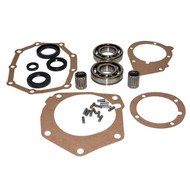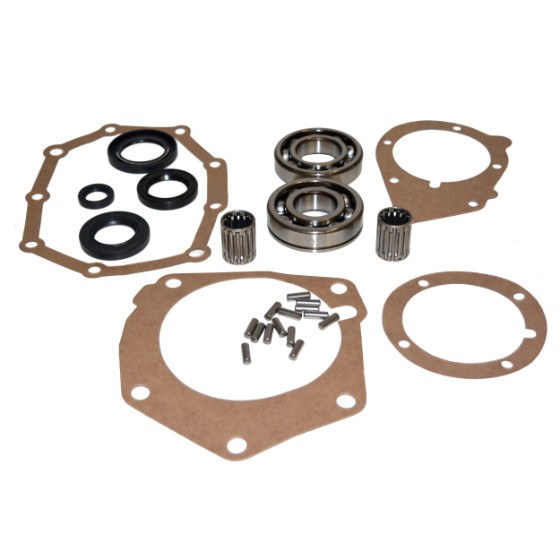

M/T BEARING KIT 74-80 TOYOTA 4SPD , SIDE LOAD .
Warranty information unavailable
First, let’s consider a rebuilt transmission. In most cases, a vehicle experiencing transmission problems is brought to an automotive repair shop. There, the transmission is removed and worked on by a mechanic who completely disassembles the transmission all the way down to its component nuts and bolts.
The mechanic inspects and cleans each and every transmission component and determines which parts are in working order, excessively worn, or just plain damaged beyond repair. Parts deemed worn or damaged are replaced with new or “used” components, and the unit is then reassembled. Once completed, the transmission is reinstalled and the vehicle is ready to hit the road. In this scenario, the transmission has been “rebuilt” – repairs have been made, bad parts have been replaced, but the unit has received few, if any, upgraded components.
A remanufactured transmission is basically the same as a rebuilt transmission, but the work has been performed by a dedicated transmission repair facility or shipped to the original transmission manufacturing facility. By opting for a transmission remanufacture, the customer is assured the transmission is being repaired by absolute experts on that particular transmission and has been remanufactured to incorporate all design and component upgrades that weren’t available when it was originally manufactured. This example also applies to transfer cases and differentials.
High stress driving will repeatedly increase the temperature of your transmission, eventually breaking down the stability of the gear oil in your car. If you regularly tow, drive in low traction conditions, or drive in mountainous regions, you will likely need to change your gear oil every 30,000 miles, or potentially even less.
In normal driving conditions, most cars can travel up to 80,000 miles before needing a gear oil change. However, this number is a maximum, and most manufacturers recommend changing your gear oil between 50,000 and 60,000 miles.
Other conditions that require a gear oil change can develop under unusual circumstances. For example, if your transfer case, differential component, or transmission has experienced submersion in water or another foreign fluid, your gear oil should be replaced. Contaminated oil can seriously damage your gearbox, transfer case, or differentials with inadequate lubrication.
You should also replace your gear oil if your transfer case or differentials recently had a leak repaired. A leak could signal contamination or low levels of gear oil. Most mechanics will replace your gear oil after repairing a leaky component, but this is sometimes forgotten during home repairs.
Lastly, if you or your mechanic finds dirty gear oil during a checkup, it should always be replaced. Old or dirty oil leads to destabilized viscosity and poor lubrication, which will prematurely damage your gearbox, transfer case, and/or differentials.
